Often considered the national dish of Haiti, Griot is made of pieces of pork shoulder that are marinated, cooked, and then fried until crispy brown. Serve this dish with Pikliz and fried plantains for a true taste of Haiti!
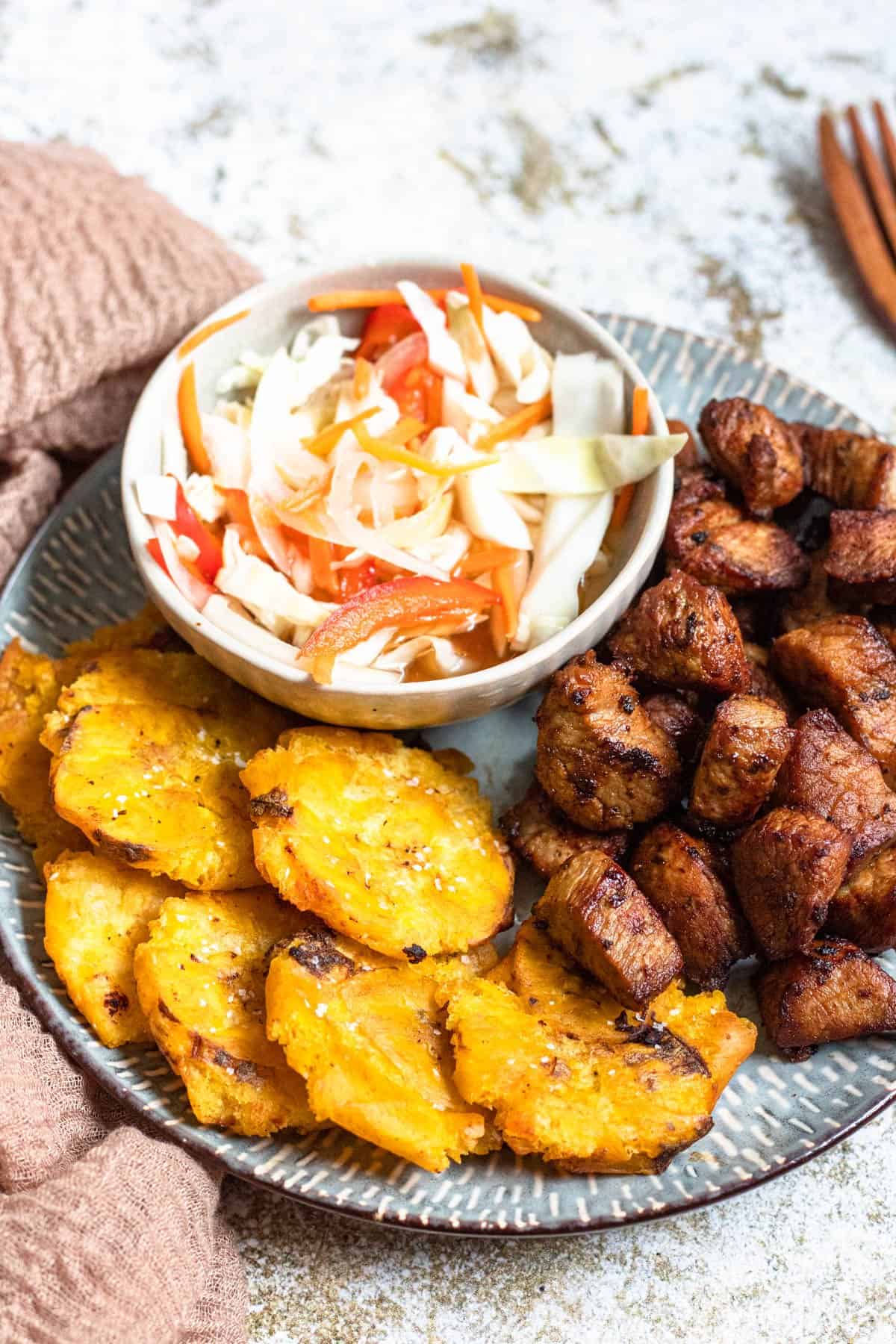
Why Make this Recipe?
- “Travel” to Haiti: If you have ever wanted to visit Haiti, this recipe is a great way to do so from your kitchen! You’ll love the Haitian flavors that come with making Griot.
- Snackable: Haitian Griot can be a great main course, but it’s also great for snacking on. The small pieces of pork shoulder can easily be served as an appetizer to allow your friends to try this delicious Haitian meal.
- Crispy: The best part of this Griot Recipe is how crispy the outside gets. MMM need I say more?
What Do I Need to Make this Recipe?
Here is a visual overview of the ingredients in the recipe. Scroll down to the recipe at the bottom for quantities.
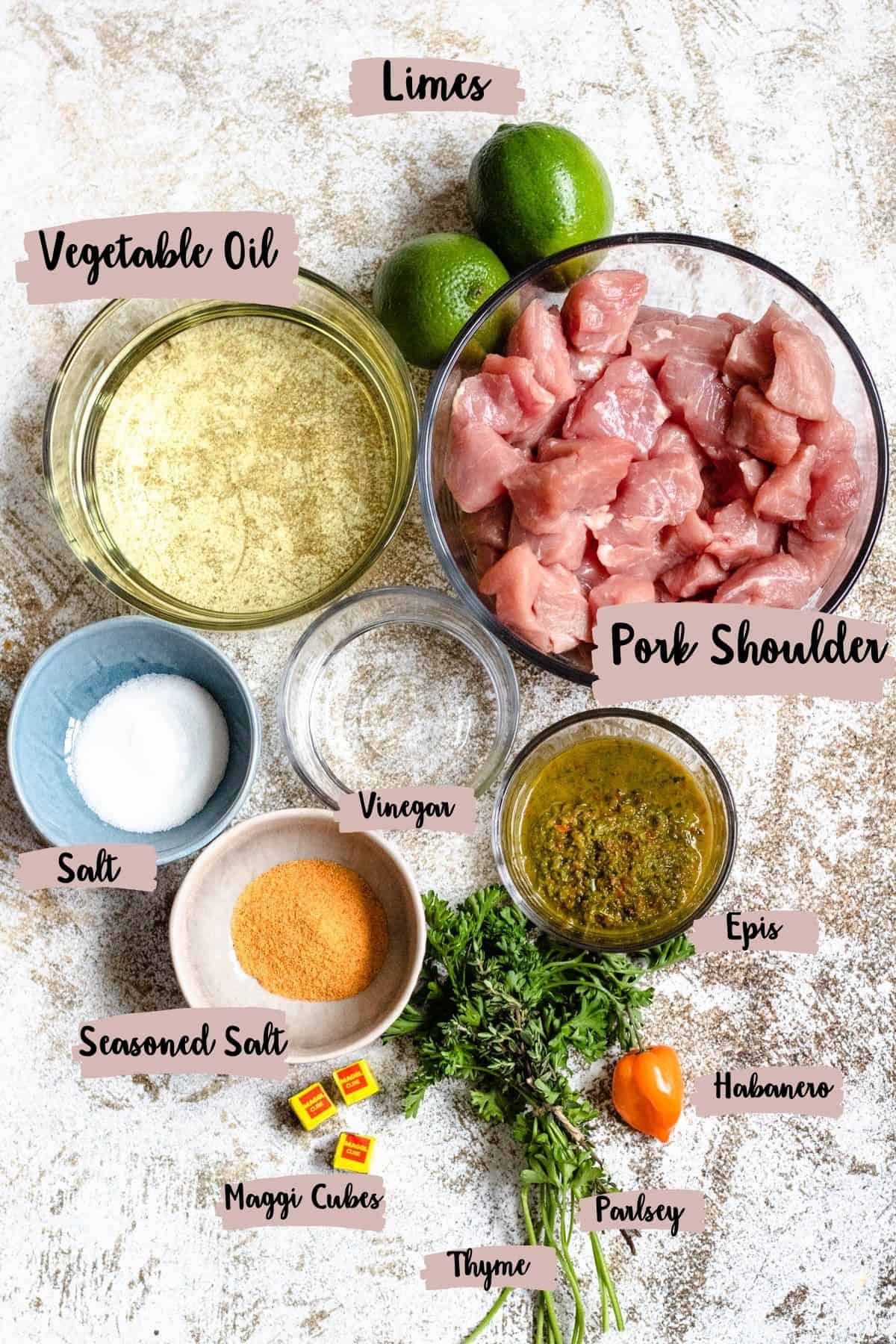
- Pork Shoulder: Pork butt and pork shoulder are similar, but there are some slight differences. You can use pork butt in a pinch, but pork stew meat is generally made of pork shoulder. That will work as well, and is already cut into pieces for you.
- Epis: Epis is a Haitian seasoning base used in most Haitian recipes. It is made by blending together herbs (such as thyme & parsley), vegetables (bell peppers & green onions), with seasonings and water.
- Maggi Cubes: Maggi cubes are seasoning cubes that are often used (especially in Caribbean and African cuisine) to add flavor to rice, meat, soups, etc. You can buy Maggi cubes on Amazon, or you can use beef bouillon instead. (NOTE: Bouillon cubes are larger than maggi cubes, so you will only need 1 if substituting).
- Pepper: You can use a scotch bonnet pepper if you can find one. I cannot find them in my town, so I use habaneros instead.
- Seasoned Salt: I use Lawry’s. A lot of recipes online call for Adobo instead, so you can use that as well.
How to Make this Recipe
[adthrive-in-post-video-player video-id=”0YjRVWru” upload-date=”2022-01-24T04:23:23.000Z” name=”Griot.mp4″ description=”Often considered the national dish of Haiti, Griot is made of pieces of pork shoulder that are marinated, cooked, and then fried until crispy brown. Serve this dish with Pikliz and fried plantains for a true taste of Haiti! ” player-type=”default” override-embed=”default”]
Step 1: Clean the Meat
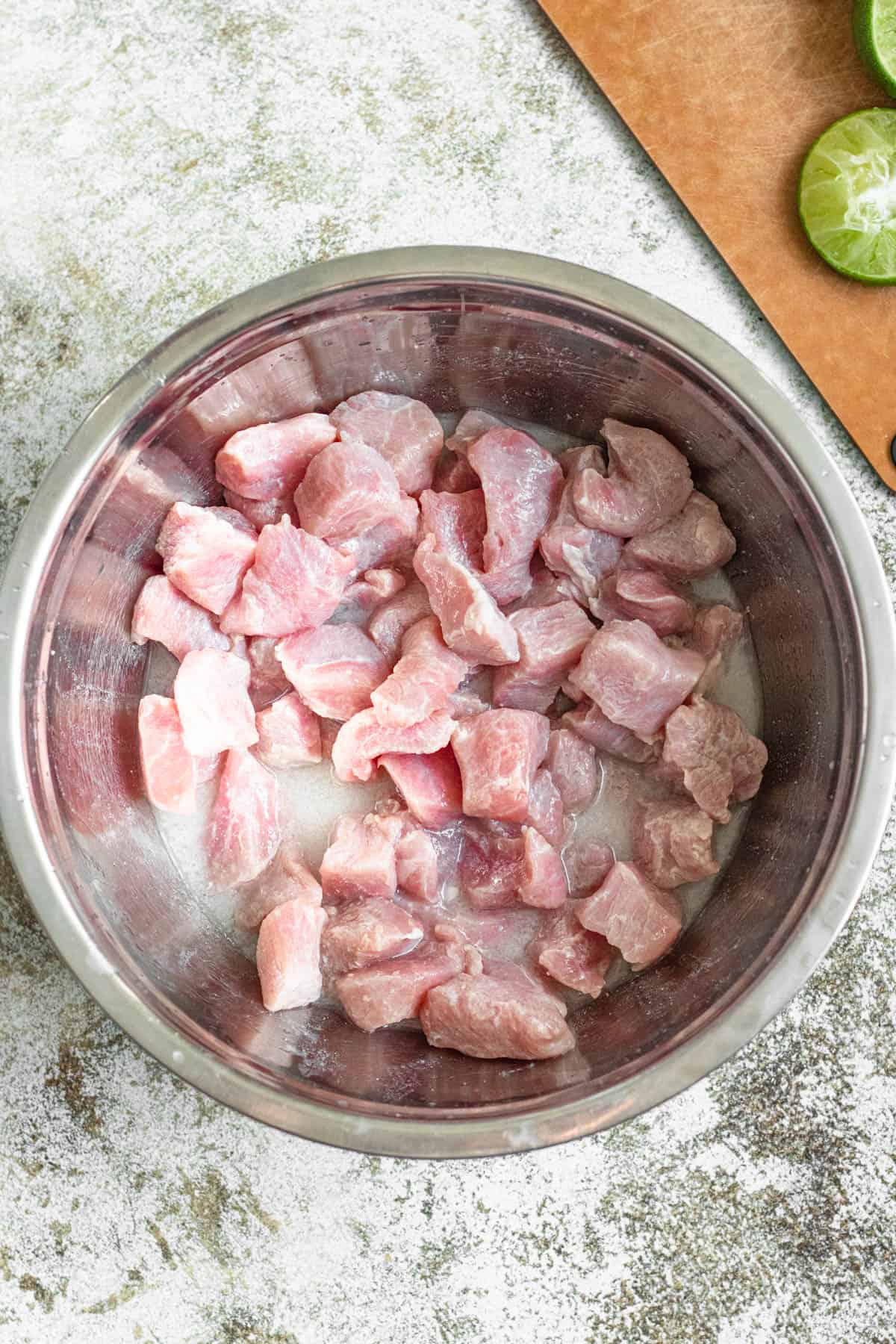
Pour the vinegar, salt and the juice of the limes over the pork. Mix to combine.
Reserve the lime halves after juicing, and rub each piece of meat on the flesh of the lime half, making sure to really get the meat covered in the citrus.
Add the meat + citrus/vinegar to a bowl. Cover the bowl, put it in the fridge, and let it sit for an hour.
When the hour is up, rinse the meat to remove the vinegar and the salt.
Step 2: Marinate the Meat
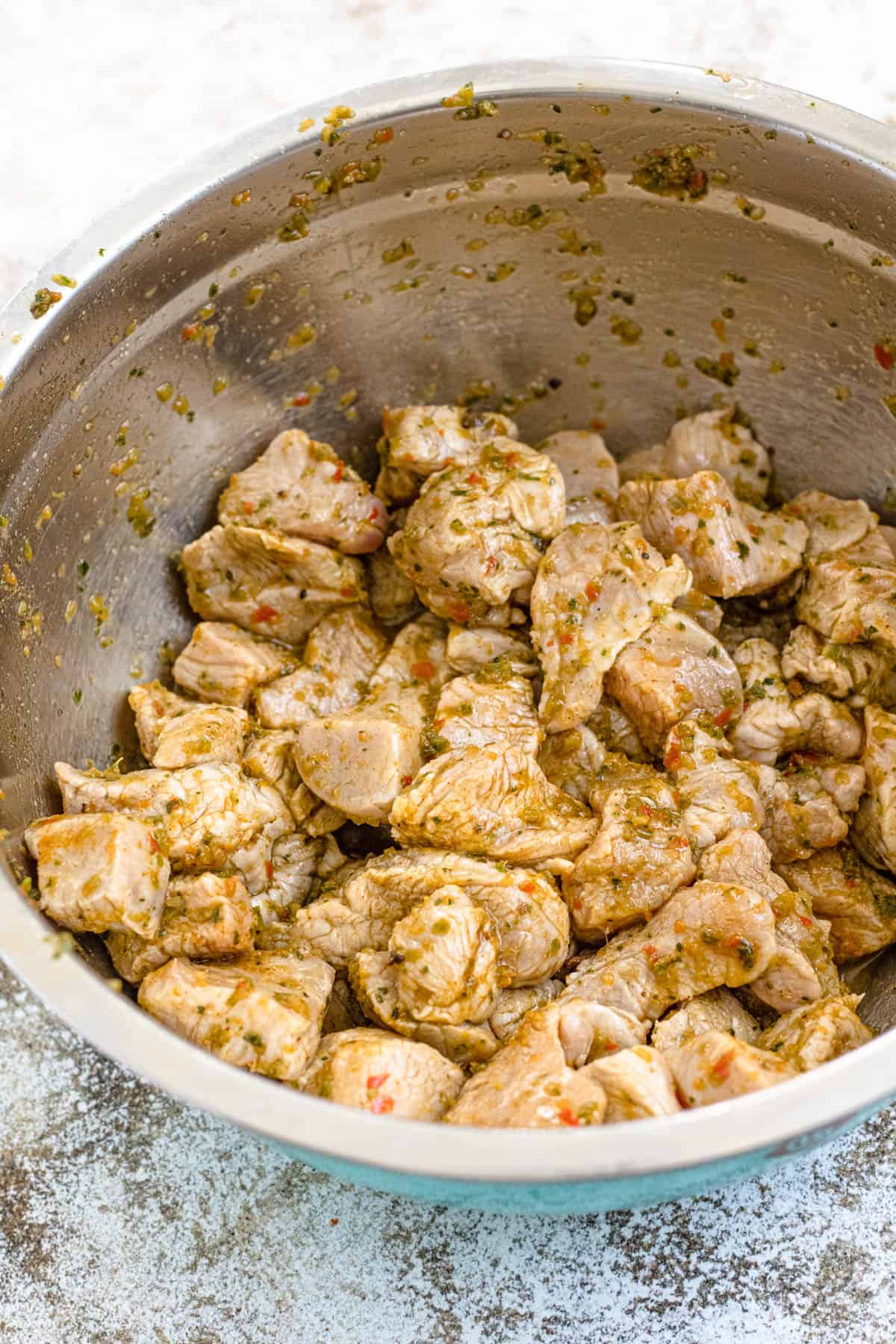
Put the pork in a bowl and add the Haitian Epis, maggi, and seasoning salt.
Use kitchen twine to tie the parsley and thyme together, then place the bunch in the bowl along with habanero pepper.
Stir until the meat is well coated. Cover again and let the meat sit in the fridge for 2 hours or overnight.
Step 3: Cook the Pork
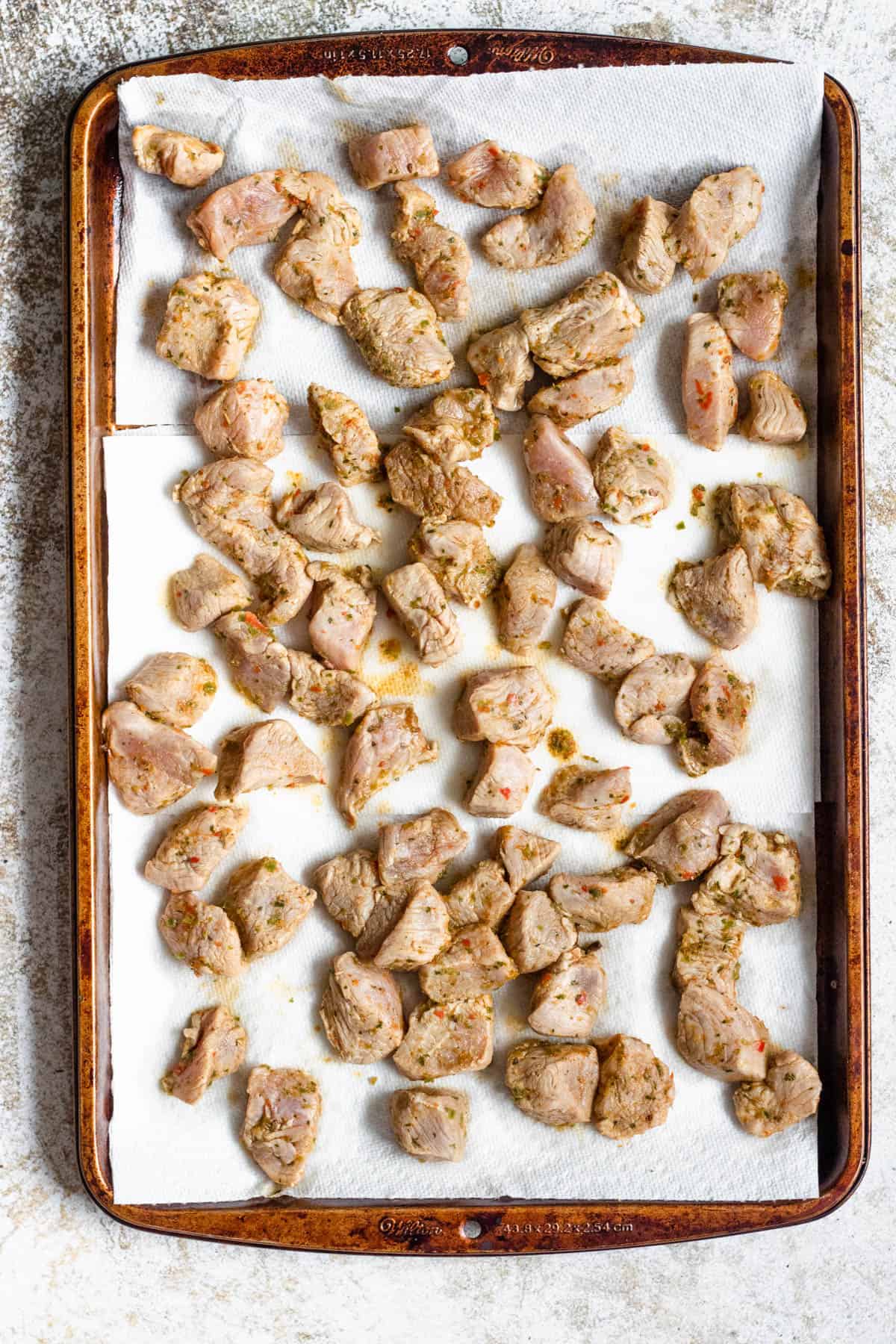
Remove the parsley, thyme and habanero pepper from the bowl and discard. Add the pork into a medium pot on the stove along with the leftover marinade.
Turn the heat to high and cook the meat for about 5 minutes until it releases some juice. Reduce the heat to medium, and cook for another 10 minutes or until the pork is cooked through and fork tender. The excess marinade should thicken a little.
Remove the pork from the pot and set aside in a bowl.
Step 4: Fry the Meat
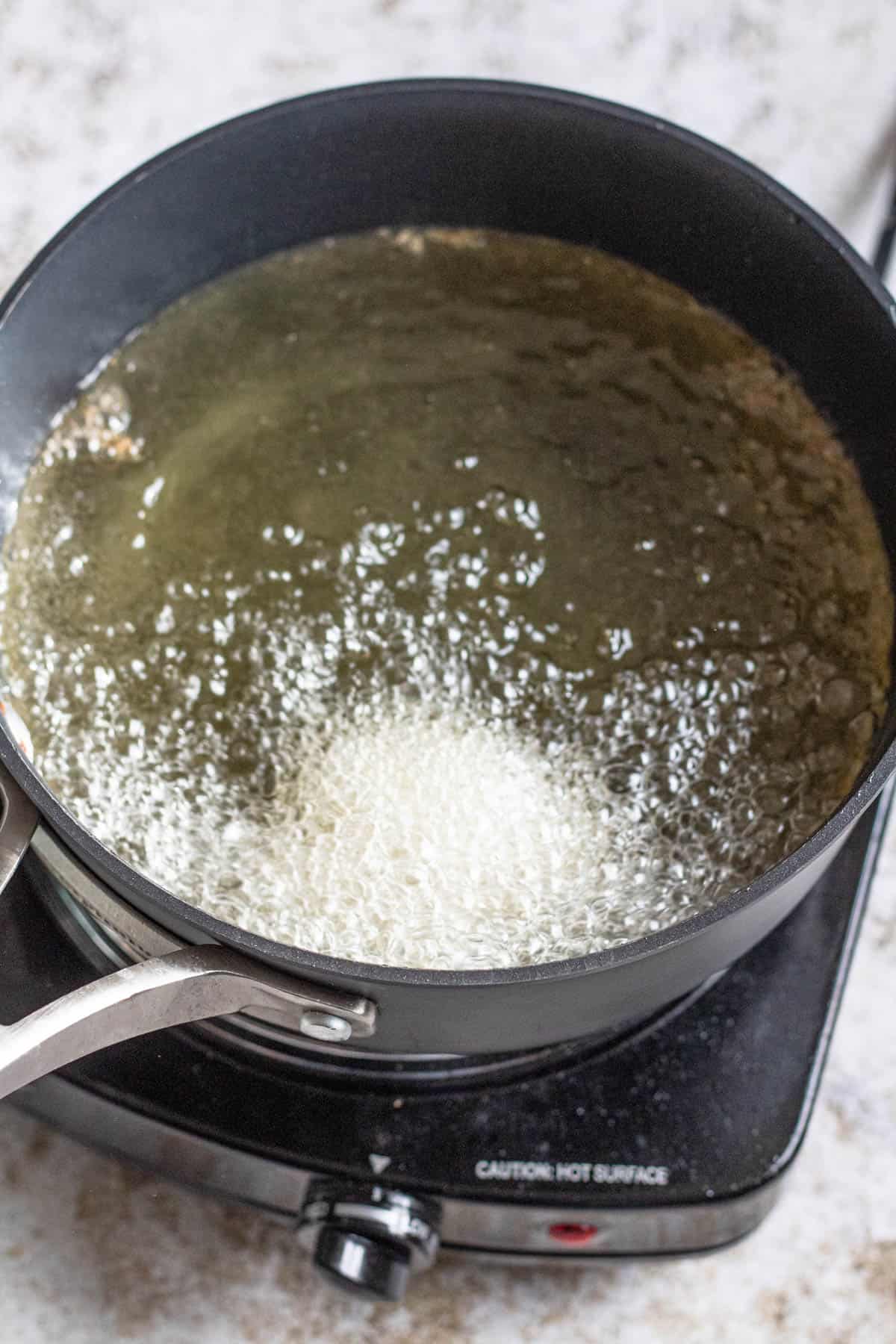
In a medium to large pot, heat the vegetable oil to 360 degrees Fahrenheit. Add the pork to the oil and fry until it turns golden brown (about 1-2 minutes). Fry the pork in batches, removing the meat to a paper towel-lined plate once it’s done frying to remove extra oil.
Serve with pikliz and fried plantains. Enjoy!
Expert Tips
- When cooking the pork in the pot, The marinade should thicken on the pork to form a sort of glaze. If this is the case, you do not need to wipe the pork pieces off before frying
- If, for some reason, your marinade does not thicken and the pork has liquid of a water consistency on it, make sure to wipe off the pork before frying it. If not, it will pop and splash in the oil.
- Have a lid handy when frying. Add some pieces into the oil, then add the lid (preferably clear). That way, you can check on the pork without risking any oil splashing.
- If frying in batches, make sure to bring the oil back to 360 degrees Fahrenheit between batches.
Recipe FAQs
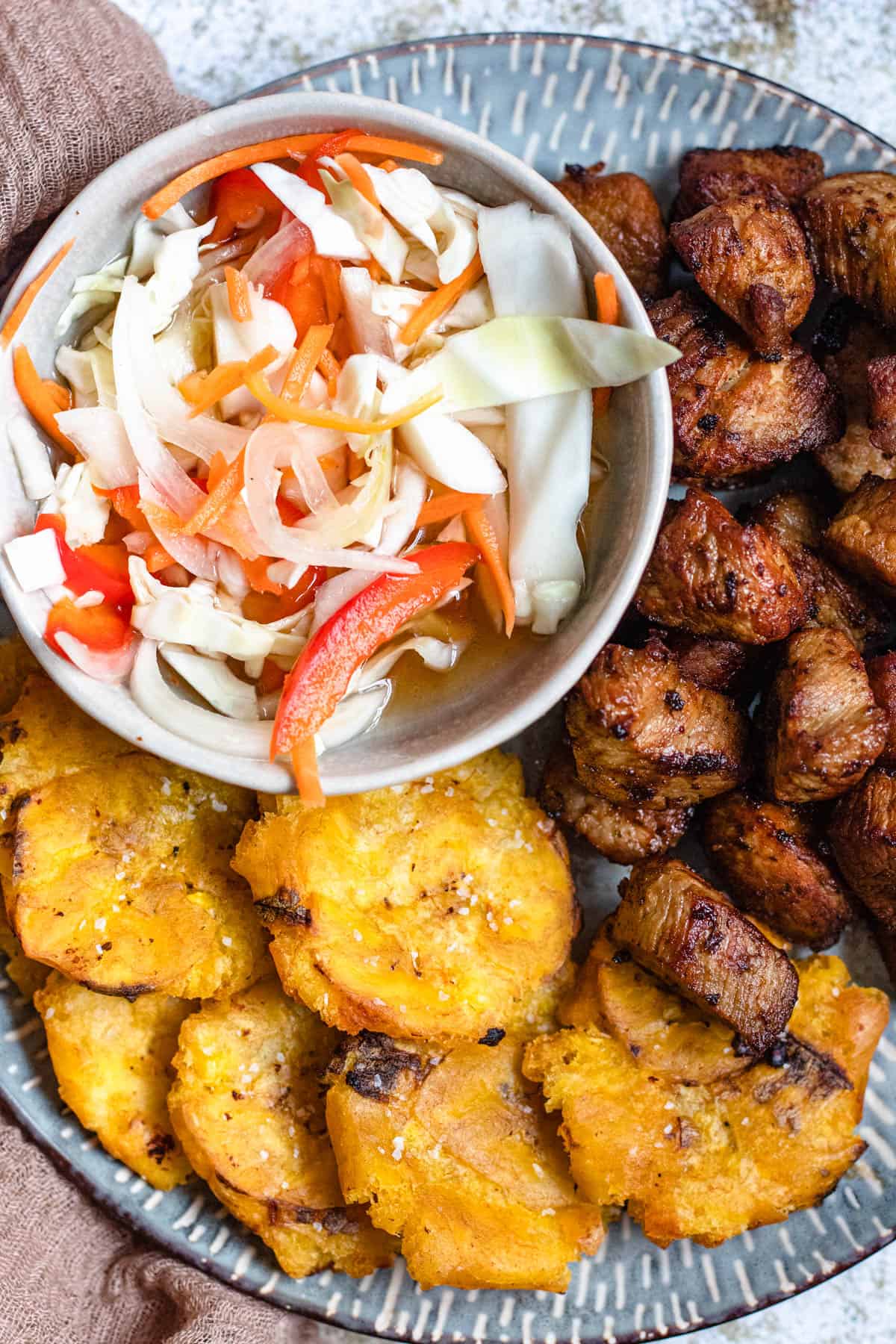
You can store Griot leftovers in an airtight container in the fridge. To reheat, pop them in an air fryer or bake in the oven until warm and crispy again.
My favorite way to eat Griot and Pikliz is to dip the Griot meat in the Pikliz juice, or even grab a little bit of each at once.
It’s common to eat Griot with your fingers. In this case, grab some vegetables from the pikliz and eat them in the same bite as the Griot.
Did you enjoy this Haitian Griot Recipe? If so, make sure to check out these other recipes I picked out just for you:
- Rum Soaked Pork Loin
- Grilled Pork Belly in Parsley Sauce
- Banana Fritter Recipe
- Frog Legs Recipe
- Haitian Spaghetti
- Dominican Breakfast Foods
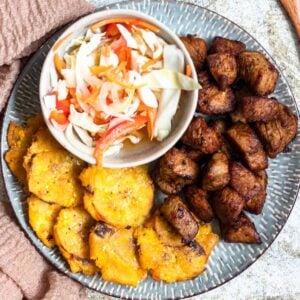
Haitian Griot Recipe
Equipment
- Mixing Bowl(s)
- Pot(s)
- Food Thermometer
- Tongs
- Wine Opener
- Paper Towel
Ingredients
- 2 lb Pork Shoulder, cut into 1” pieces
- ¼ cup White Vinegar
- ½ tbsp Salt
- 4 limes
- ½ cup Epis
- 4 Maggi Cubes, Mini, 4 g each. Or 1 normal maggi cube
- 5-6 stems Parsley
- 4 sprigs Thyme
- 1 Habanero Pepper
- 2 tbsp Seasoned Salt, can also use adobo
- Vegetable Oil, for frying
Instructions
- Pour the vinegar, salt and the juice of the limes over the pork. Mix to combine.
- Reserve the lime halves after juicing, and rub each piece of meat on the flesh of the lime half, making sure to really get the meat covered in the citrus.
- Cover the bowl, put it in the fridge, and let it sit for an hour. When the hour is up, rinse the meat to remove the vinegar and the salt.
- Put the cleaned pork in a bowl and add the Haitian Epis, maggi, and seasoning salt. Use kitchen twine to tie the parsley and thyme together, then place the bunch in the bowl along with habanero pepper.
- Stir until the meat is well coated. Cover again and let the meat sit in the fridge for 2 hours or overnight.
- Remove the parsley, thyme and habanero pepper from the bowl and discard. Add the pork into a medium pot on the stove along with the leftover marinade.
- Turn the heat to high and cook the meat for about 5 minutes until it releases some juice.
- Reduce the heat to medium, and cook for another 10 minutes or until the pork is cooked through and fork tender. The excess marinade should thicken a little. Remove the pork from the pot and set aside in a bowl.
- In a medium to large pot, heat the vegetable oil to 360 degrees Fahrenheit. Add the pork to the oil and fry until it turns golden brown (about 1-2 minutes). Fry the pork in batches, removing the meat to a paper towel-lined plate once it’s done frying to remove extra oil.
- Serve with pikliz and fried plantains. Enjoy!
Notes
- Pork Shoulder: Pork butt and pork shoulder are similar, but there are some slight differences. You can use pork butt in a pinch, but pork stew meat is generally made of pork shoulder. That will work as well, and is already cut into pieces for you.
- Epis: Epis is a Haitian seasoning base used in most Haitian recipes. It is made by blending together herbs (such as thyme & parsley), vegetables (bell peppers & green onions), with seasonings and water.
- Maggi Cubes: Maggi cubes are seasoning cubes that are often used (especially in Caribbean and African cuisine) to add flavor to rice, meat, soups, etc. You can buy Maggi cubes on Amazon, or you can use beef bouillon instead. (NOTE: Bouillon cubes are larger than maggi cubes, so you will only need 1 if substituting).
- Pepper: You can use a scotch bonnet pepper if you can find one. I cannot find them in my town, so I use habaneros instead.
- Seasoned Salt: I use Lawry’s. A lot of recipes online call for Adobo instead, so you can use that as well.
- When cooking the pork in the pot, The marinade should thicken on the pork to form a sort of glaze. If this is the case, you do not need to wipe the pork pieces off before frying
- If, for some reason, your marinade does not thicken and the pork has liquid of a water consistency on it, make sure to wipe off the pork before frying it. If not, it will pop and splash in the oil.
- Have a lid handy when frying. Add some pieces into the oil, then add the lid (preferably clear). That way, you can check on the pork without risking any oil splashing.
- If frying in batches, make sure to bring the oil back to 360 degrees Fahrenheit between batches.


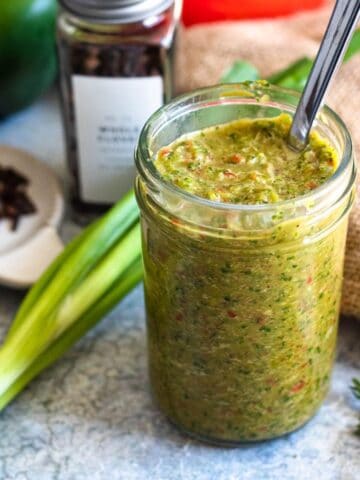

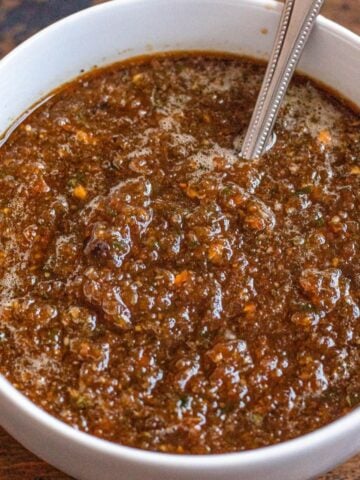
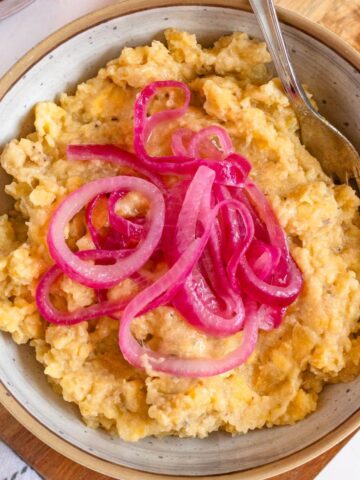




Sabrina Celestin says
Which Maggi cube Chicken, beef or djon djon?
Alexandria Drzazgowski says
Any work! I usually use chicken 🙂
Sebastian says
How is this supposed to be cooked? You say to just slap it in a pot and it comes out cooked, but that’s not how you end up with tender stew meat. Are you trying to steam the meat in the pot? Are you trying to braise the meat with the liquid from the marinade? Why cook this in a pot on the stove with no medium for heat transfer instead of just putting it in the oven? And if it absolutely needs to be covered, make it a pot roast with the lid on. I’d like to know exactly what the cooking process is if you want me to accurately replicate it.
Tom B says
Is the scotch bonnet to be diced, or just split and discarded with the herbs?
Alexandria Drzazgowski says
You can do either! I don’t have a huge spice tolerance so I split it and then discard. If yoy live spicy food, feel free to dice it up into the dish!
Marc says
How much oil are you using to fry the pork?
Alexandria Drzazgowski says
The pork should be deep fried! So enough oil so that it can be fully submerged.
Lyeta Herb says
I don’t see the Hatian Piklez Recipe nor the Fried Plantains recipe. Which is the reason I read the whole recipe and the highlight tips for Groit. I don’t eat pork but I do eat homemade Piklez.👌🏾 Although the Recipe sounds interesting the way you pat dry and fry without flour.
Alexandria Drzazgowski says
Hi Lyeta,
The recipes for pikliz and fried plantains are hyperlinked in the article. You can also just search them in the search bar on my site and find them!
Carlos Casseus says
I gave it a five Stars based on the presentation and the recipe preparation; which let me to believe it will be very tasty
Kevin Kruger says
Pork butt IS pork shoulder. There is no difference because they are one and the same. The meat from the rear of the pig is called fresh ham. “Butt” does not refer to meat from the rear of the pig.
The Foreign Fork says
Both come from the shoulder of the pig, but pork butt is higher on the foreleg, while pork shoulder is farther down 🙂
Golden Flower says
It is not necessary to use salt, seasoning salt and Maggi cubes at the same time. You can omit the Maggi cubes because some people may be allergic to monosodium glutimate which is one of the ingredients in Maggi cubes. If you use epis, salt in addition to thyme, parsley and garlic cloves, your recipe would be better for those on sodium restrictions.
The Foreign Fork says
Yes you definitely can use 1 or 2 of them! Each recipe is different and I like the way this one tastes, but if you are going for a low sodium alternative you can definitely adjust 🙂